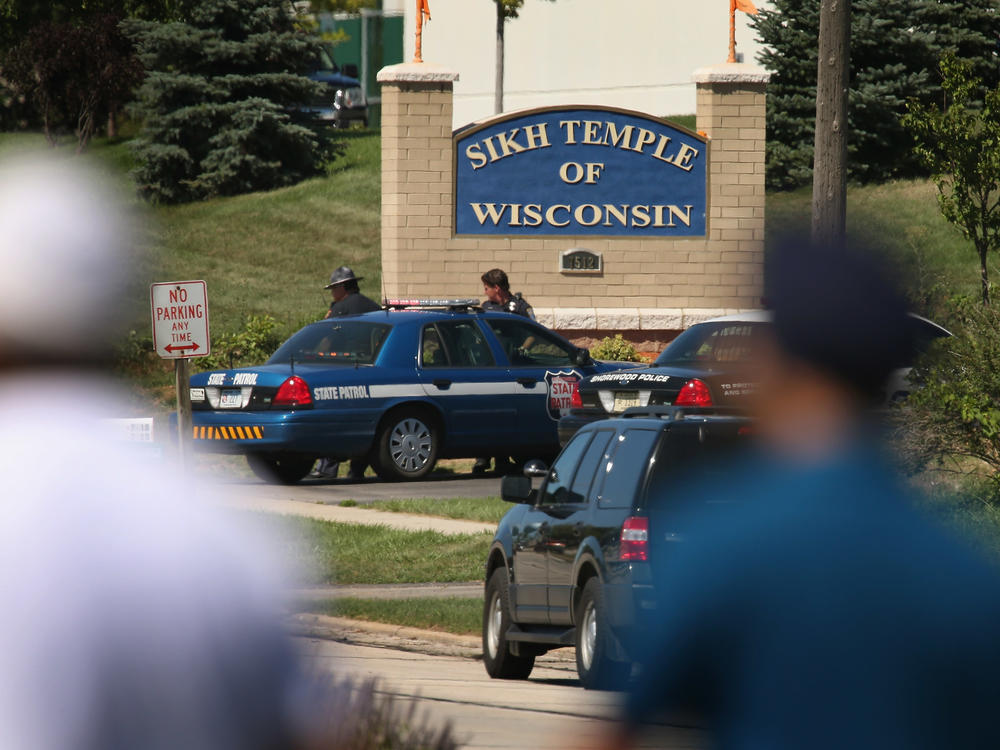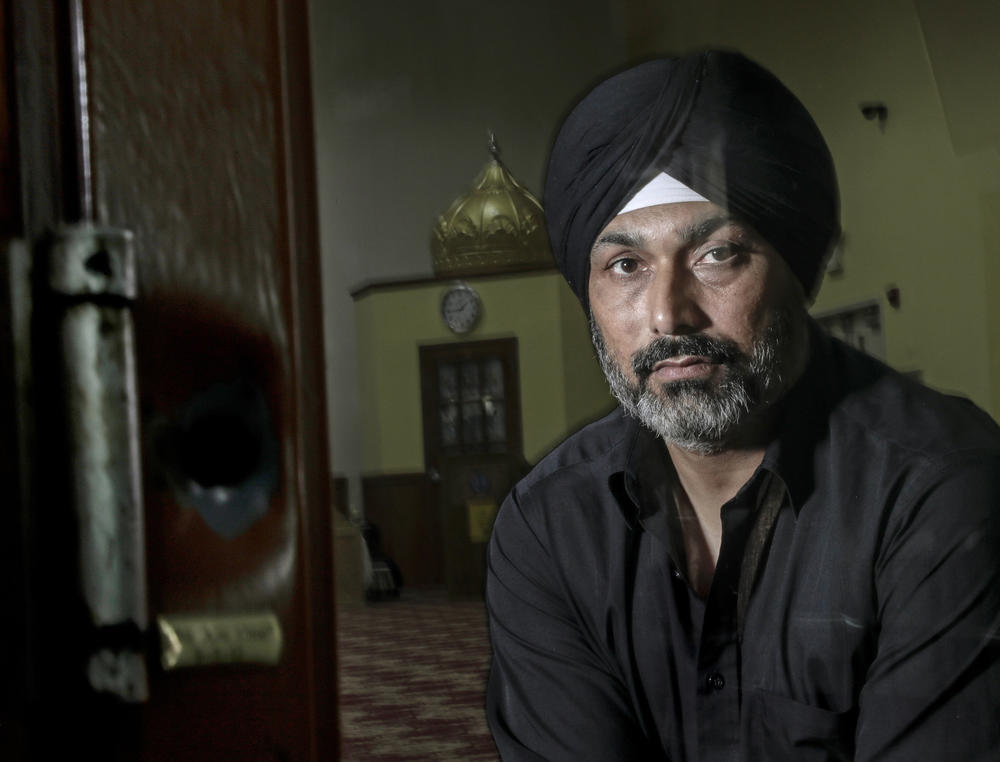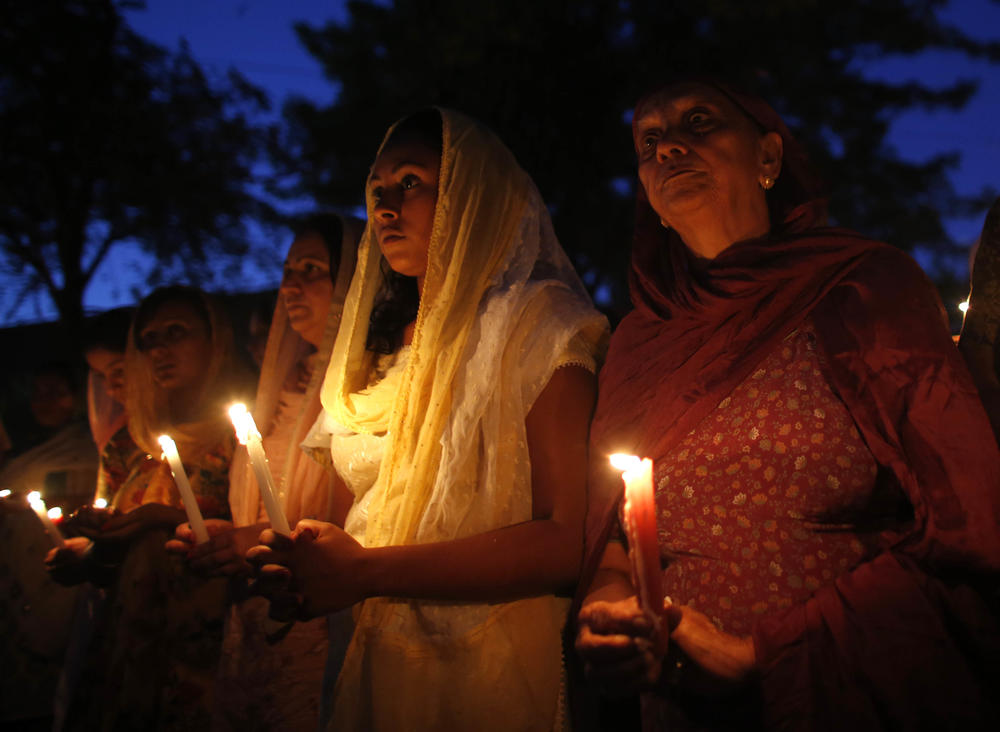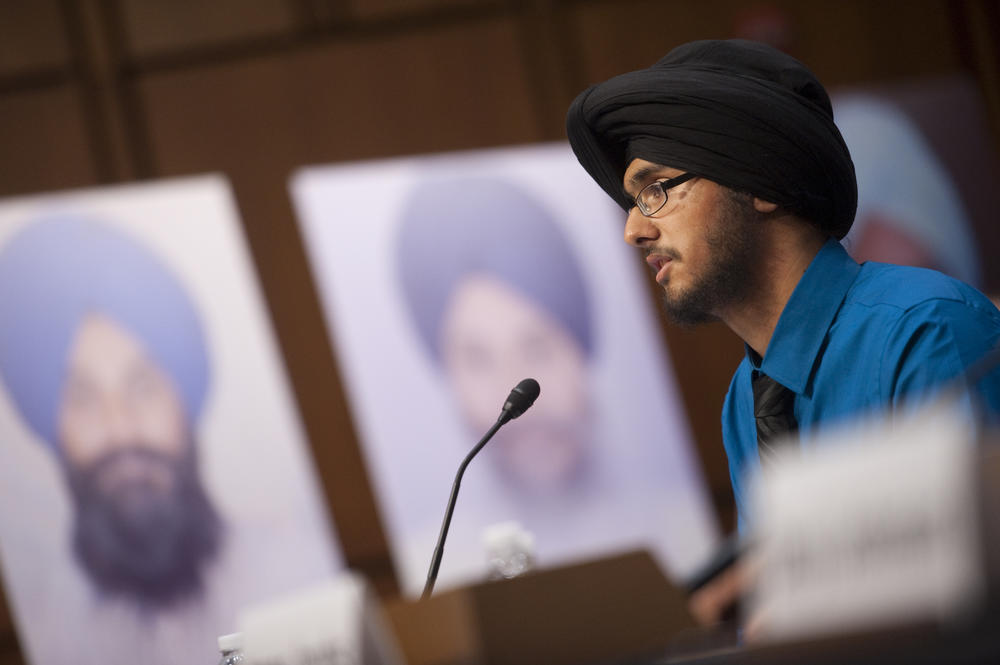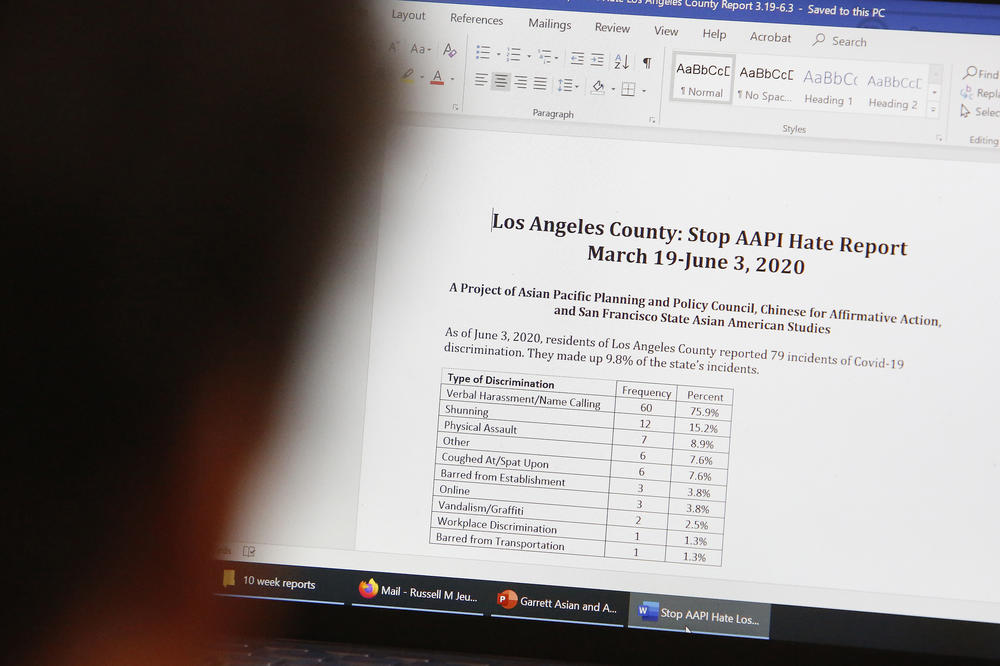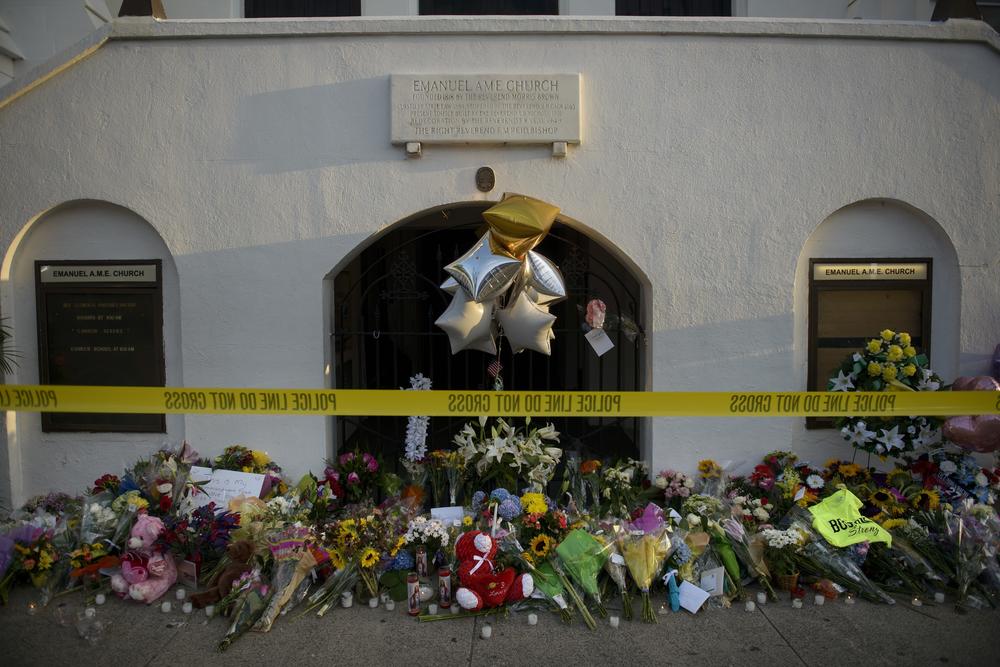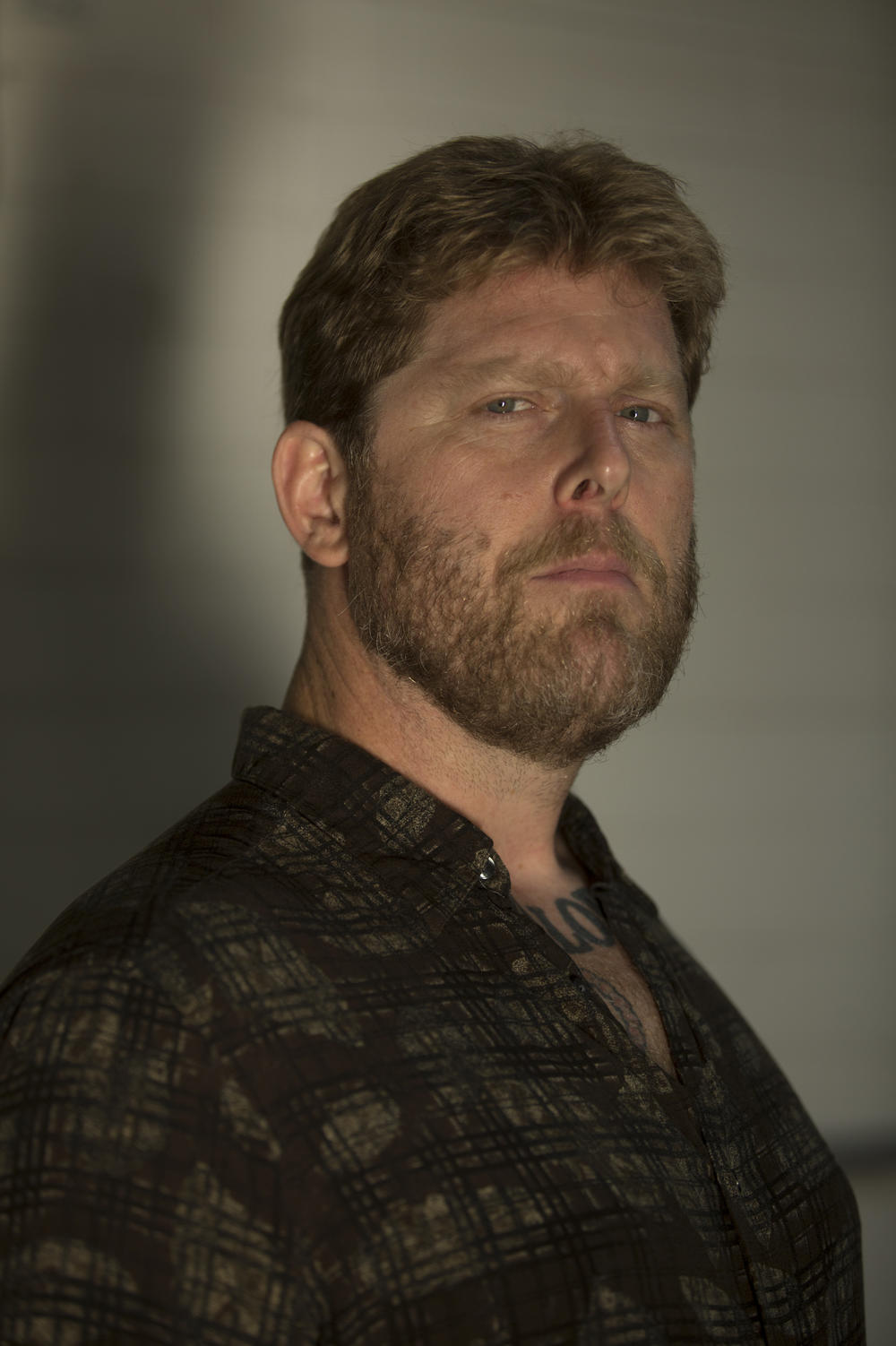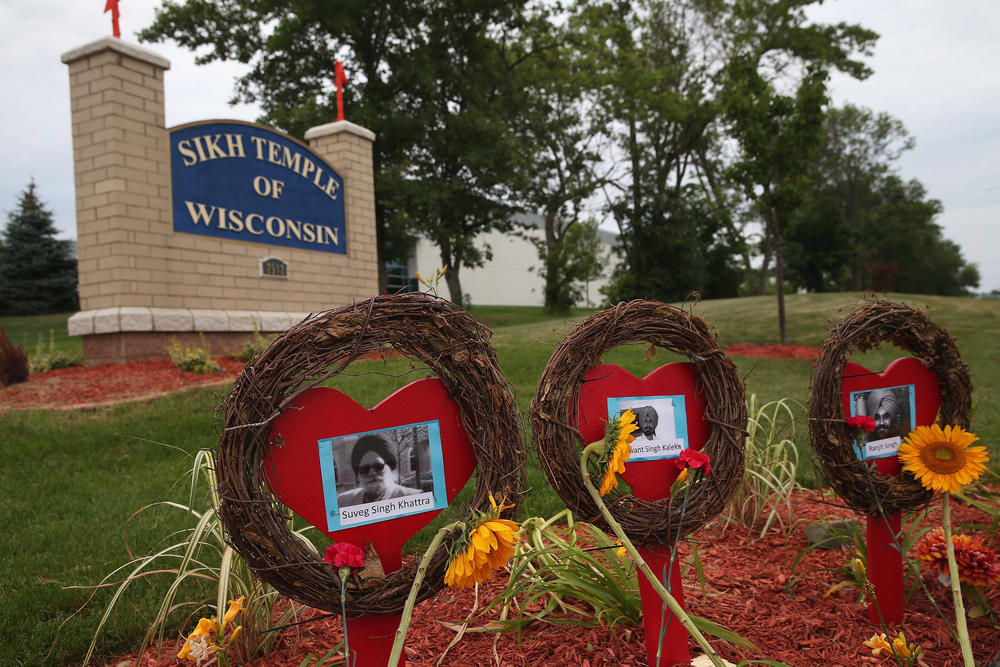Section Branding
Header Content
Remembering the Oak Creek killings, a harbinger of white supremacist violence
Primary Content
But for a notebook, it could have turned out very differently.
They were supposed to be at the Gurdwara, a Sikh house of worship, but Pardeep Singh Kaleka's daughter had made them turn back around.
"It was only because my daughter had forgot a notebook at the house," Kaleka says, "that we were not inside the temple at the time."
They were still 10 minutes away when a white supremacist walked into the Oak Creek, Wisc., Sikh temple and opened fire, shooting 10 people, killing six — seven if you count Baba Punjab Singh who was partially paralyzed and died from the wound in 2020.
Then he turned the gun on himself.
This weekend, Kaleka and other survivors are marking the 10th anniversary of the Oak Creek massacre. At the time, it was the deadliest hate crime in a place of worship in the United States.
Kaleka's father, Satwant Singh Kaleka was the Gurdwara's founder. He was killed that day.
"My mom was able to survive by hiding in a closet with other women that were there," Kaleka says.
Kaleka thinks a lot about what it means to survive hate, 10 years later. He says this anniversary feels like neither a beginning nor an ending, instead it feels like the middle.
"A lot has been done," he says. But there is still so much to do.
Since Oak Creek, there have been at least 8 other mass shootings by white supremacists:
Isla Vista, Calif.; Charleston, S.C.; Roseburg, Ore.; Parkland, Fla.; Santa Fe, Texas; Pittsburg, Pa.; El Paso, Texas, and Buffalo, N.Y.
"I think so much about how understanding racism and white supremacy is such an academic exercise for lots of Americans," Kaleka says. "And for other people it's a lived experience."
It did not stop
In 1907, the white workers of Bellingham, Wash., viciously rounded up all the South Asians — mostly Sikhs — who had come for jobs in the city's lumber mills. They were driven to the edge of town, put in jail, beaten and forced to flee. Within 10 days the entire South Asian population was, as the local paper at the time reportedly put it, "wiped off the map."
In New Jersey in the late 1980s a gang that called themselves the "dot busters" in a letter to their newspaper took responsibility for a spate of attacks on Indians that lasted several years, cloaking the community in dread. At least one man was killed, another left in a coma.
That was all before 9/11 — which transformed what it meant to be South Asian American, and in a sense created a new racial category — being "brown" or "Muslim-looking."
White Americans may remember the days after 9/11 as a time of mourning, shock and fear that international terrorists were coming from outside to attack the United States. For many South Asian and Muslim Americans, that fear combined with a threat coming from inside the nation — blame, racist abuse, hate, and violence from fellow Americans.
"In those horrific first few weeks we kept thinking OK, it's going to stop," says Deepa Iyer.
Iyer was the head of the advocacy organization SAALT — South Asian Americans Leading Together — during 9/11 and Oak Creek.
"We'll send the right messages out, and get media to cover it, and get the president to say something and it'll stop," she says.
But it did not stop. The first deadly hate crime in the aftermath of 9/11 was the slaying of a turbaned Sikh man, Balbir Singh Sodhi, in Mesa Ariz., shot dead while he was planting flowers outside the gas station he owned.
Iyer says what made the hate and violence that followed the attacks on the Twin Towers different was that it paralleled the targeting of Muslims and South Asians by government policies and law enforcement.
"The idea that South Asians are a national security threat, I don't know that that has ever gone away," she says.
"And then it led to what happened on August 5th, 2012."
When Oak Creek happened, "the Sikh community had already been warning about xenophobia translating into violence for a decade," says Nikki Singh.
Singh is senior policy and advocacy manager at the Sikh Coalition, an advocacy group for Sikhs in the United States that was founded the night of 9/11. They weren't alone — those warnings also came from "the Muslim community, from the Arab community, other South Asians, from the Latinx community."
But the government cared more about the idea of South Asians as perpetrators of terrorism, than to see them as its potential victims, both Iyer and Singh say.
"Oak Creek can be seen as kind of a warning sign of the increasingly violent and assertive role that white supremacy was set to play in American society over the next decade," Singh says.
An attack on one of us is an attack on all
Forty-five days after the massacre, Harpreet Singh Saini, whose mother was killed at the Gurdwara, testified before the U.S. Senate.
"I came here today to ask the government to give my mother the dignity of being a statistic," he told them, referring to the fact that the FBI did not track hate crimes against Sikhs. "My mother and those shot that day will not even count on a federal form."
"We cannot solve a problem we refuse to even recognize," he testified.
The FBI officially started tracking hate crimes against Sikhs in 2015.
"It took a mass incident like this happening for the government to take it seriously," Nikki Singh says. "To be added as a category."
The data since shows a stark picture.
"Sikhs have been among the top five, if not among the top three, most targeted faith groups for hate crimes, across the United States," she says.
She points out those numbers are rising even as law enforcement agencies have been choosing not to collect and share hate crimes with the federal government.
Since the beginning of the COVID pandemic, the group Stop AAPI Hate has been tracking hate crimes against Asian Americans. Russell Jeung, the co-founder of Stop AAPI Hate and a professor at University of California, San Francisco, says while their data has shone a much-needed light on rising hate crimes against East Asians, all Asian Americans are reporting worrying rates of hate crimes and bias incidents.
"South Asians, Pacific Islanders and Southeast Asians had higher rates in the past year than East Asians," he says.
Deepa Iyer says that Asian American solidarity, alongside solidarity with Black people and other marginalized communities, has been one a source of deep hope in the past few years.
"There has been a tremendous growth in solidarity, not just in words, but in practice and actions."
Iyer says that solidarity is something the survivors of the massacre have modeled throughout the past decade.
"What I always remember is how the Oak Creek community showed up for others," Iyer says.
They showed up when a white supremacist killed 9 people in 2015 at a Black church in South Carolina, surpassing Oak Creek as the deadliest hate crime in a place of worship.
"They held a vigil that night," Iyer said.
They showed solidarity in other ways as well.
After 9/11, many Sikhs were targeted because Americans incorrectly thought they were Muslim. It didn't matter that they were from a completely different faith system, they were still victims of Islamophobia.
Speaking at the hate crimes hearing in 2012, Harpreet Singh Saini talked about not taking an easy out.
"So many people have asked Sikhs to simply blame Muslims for attacks against our community, or just say, 'We're not Muslim,' " he said.
"But we won't blame anyone else. An attack on one of us is an attack on all of us."
Root Causes
Instead, Saini asked the government to go after who was really responsible.
"I ask that government pursue domestic terrorists with the same vigor as attacks from abroad," he said at the hearing.
But even years later, the FBI has been slow to classify attacks by white nationalists as domestic terrorism.
That's one reason the Sikh Coalition is asking not just for prayers on the anniversary of Oak Creek, but for action. One of those action items is the passage of The Domestic Terrorism Prevention Act. The bill passed the House of Representatives, but was filibustered by Republicans in the Senate.
Domestic terrorism didn't start with Oak Creek, says Pradeep Singh Kaleka, whose father was killed that day.
"We have to understand the domestic terrorism has always been here," he says.
He points to slavery, massacres of Native Americans, lynchings, and white mob violence — like Tulsa's Black Wall Street, or the 1907 Bellingham riots.
"It was used to control so many people and control the society," he says. "And I think that now that it is backfiring and people are saying, well, maybe we need to do something about it."
But nothing can really change, he says, without addressing the root causes.
Which is why a few months after his father was killed, Kaleka found himself across the table from a tall, tattooed, white man. Not just any white man, but a former skinhead and founder of one of the largest white supremacist organizations in the country at the time, Arno Michaelis, a man who used to commit violent acts in the name of white power.
The meeting was at a Thai restaurant on the East side of Milwaukee, which oddly enough put Kaleka at ease.
"White people can barely handle spicy food," he says, laughing. "So he must not be a racist anymore."
That meeting would lead to a long-term friendship.
Kaleka made it his mission to confront white supremacist violence, partnering with Michaelis to teach young people to undo racism. Kaleka is now a deradicalization expert, sometimes working directly with white supremacists.
"A lot of my clients who were people of color would have trauma-related disorders," he says. But it was different with white clients. "People who were white would have anxiety-related disorders."
Kaleka knows that trauma can be generational, inherited from our histories.
"So can anxiety," he says. "I see that white society right now is so just embroiled in a sense of fear and lots of times it's normalized."
To Kaleka, it's all connected — the push for guns, the idea that there should only be one religion, that "someone says, 'I'm the only one who has this landline to god,' " neighborhoods segregated out of a false sense of safety.
"It's such a fear-based mindset," he says.
Kaleka says it's about trying to capture and hold onto power, but a perverted power.
"They think power over somebody is actual power," he says.
While the Oak Creek community gathers for a vigil Friday night to mark the anniversary, Donald Trump will be holding a rally about 20 minutes away in Waukesha. That is the site of a mass killing last November that the Anti Defamation League says has been exploited by white supremacists.
"White supremacists have claimed that the incident was an 'anti-White terror attack' and are using it to sow anti-Semitic and racist conspiracies, blaming both Jews and the liberal media for covering up a 'black-on-white attack,' " the ADL writes in a blog post on its website.
"You have to kind of think about why is it that people are choosing these dates and places," says Kaleka.
"These political battle lines have casualties," he says. "And often those casualties are minority and underrepresented communities," something he knows all too well.
Before 2012, Kaleka says he wouldn't have considered himself "super religious or even spiritual." The massacre changed that.
He points to the last line in Sikh scripture, "Nanak naam chardi kala, tere bhaane sarbat da bhala."
"A lot of times we hear the chardi part, which means relentless optimism," he says referring to chardi kala, an oft repeated Sikh phrase that speaks to Sikhism's ability to find positivity, even in the face of great struggle.
But it is the full phrase in its entirety that Kaleka gets most hope from.
"It means we shall bend the moral arc of the universe towards the good for all people."
Copyright 2022 NPR. To see more, visit https://www.npr.org.
Bottom Content

